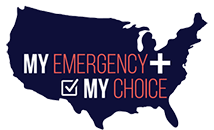Insurance Explained for Everyone

Insurance Explained for Everyone
Understanding how health or medical insurance works is easier if you are able to recognize the differences among various terms. Here is a look at the primary phrases that you should understand to get a better idea of what insurance coverage actually means for you.
What is Health Insurance?
Health insurance provides coverage that pays a portion of your health care costs. Depending on the insurance contract you purchase for a monthly premium, your insurance can cover some or all of your fees for medical services.
What is a Copay?
Also referred to as a copayment, a copay is the cost you have to pay for a covered service, including physician visits, medical procedures, and prescriptions. In many cases, you must meet your deductible in full before copays become active.
What is a Deductible?
A deductible is the amount of money you must pay before your insurance plan begins to cover your health care services. It is set at a predetermined amount at the time you purchase your insurance plan. Once the deductible is met, your coinsurance or copayments come into play along with your insurance, which is designed to pay a portion of your expenses for healthcare services
ER Benefits and Insurance?
A visit to the emergency room can be expensive, particularly if you are working with a high-deductible insurance plan. If your deductible hasn’t been met, you are responsible to pay the full amount of the bill. However, current regulations provided by the Affordable Care Act make it necessary for emergency rooms to charge their patients at in-network rates, keeping the costs lower for anyone who finds it necessary to go to the ER.
What is Billing? How Does it Work?
Each provider bills patients for the services they receive. Before deductibles are met, the patient is responsible for the entire amount. Once copayments are activated, patients pay this amount, which varies according to the terms of the insurance coverage. If no copayment is involved, patients pay the difference between the allowable amount paid by the insurance company and the provider’s charge.
How to Determine What You Will Pay Out of Pocket after Your Copay and Deductible
Determining how much you will pay once your deductible has been met requires you to know what your out-of-pocket maximum is. The out-of-pocket maximum is the most that you can be required to pay for healthcare services. Once you have reached this amount, you are no longer expected to pay anything toward the services you receive with the exception of your premiums. Typically, your out-of-pocket maximum is higher than your deductible, so you will have to cover the cost of copayments until you reach that amount. Your out-of-pocket cost equals the amount of your deductible plus the difference between your out-of-pocket maximum and your deductible.
What is a Physician’s Bill?
A physician’s bill typically includes an invoice listing provided services and the accompanying charges attached to them. It provides the amount patients must pay to cover the cost of physician-provided services, which can include but are not limited to surgical care, medical care, review of diagnostic reports, and interpretation of laboratory results.
Insurance for Low-income Families
Due to changes created by the Affordable Care Act, healthcare insurance options are widely available for low-income families at affordable premiums. Government-mandated subsidies are in place, lowering the overall cost of obtaining health insurance for individuals with limited incomes. Free health insurance is also available for anyone who meets the criterion. Eligibility is determined by a number of factors, including the individual’s age, location, income, and the number of people in the household.
What are Self-pay Options?
A number of self-pay options are available for individuals who prefer not to purchase healthcare insurance. The most basic option is to simply elect to pay cash for every healthcare visit or service. While some physicians charge less for patients choosing this option, others do not. Therefore, it is important to do some research and find providers who prefer to accept cash over insurance.
A second self-pay option involves finding a packaged bundle of services that you can purchase to obtain less expensive fees for healthcare services. A third option requires a small monthly fee to obtain access to unlimited basic care services from a participating physician. Clinics provide a fourth option offering basic healthcare services at a reduced cost.
Understanding your healthcare insurance coverage is nearly as important as buying it. Unless you have a clear understanding of the plan’s requirements, you might be surprised when you receive your bill in the mail.




